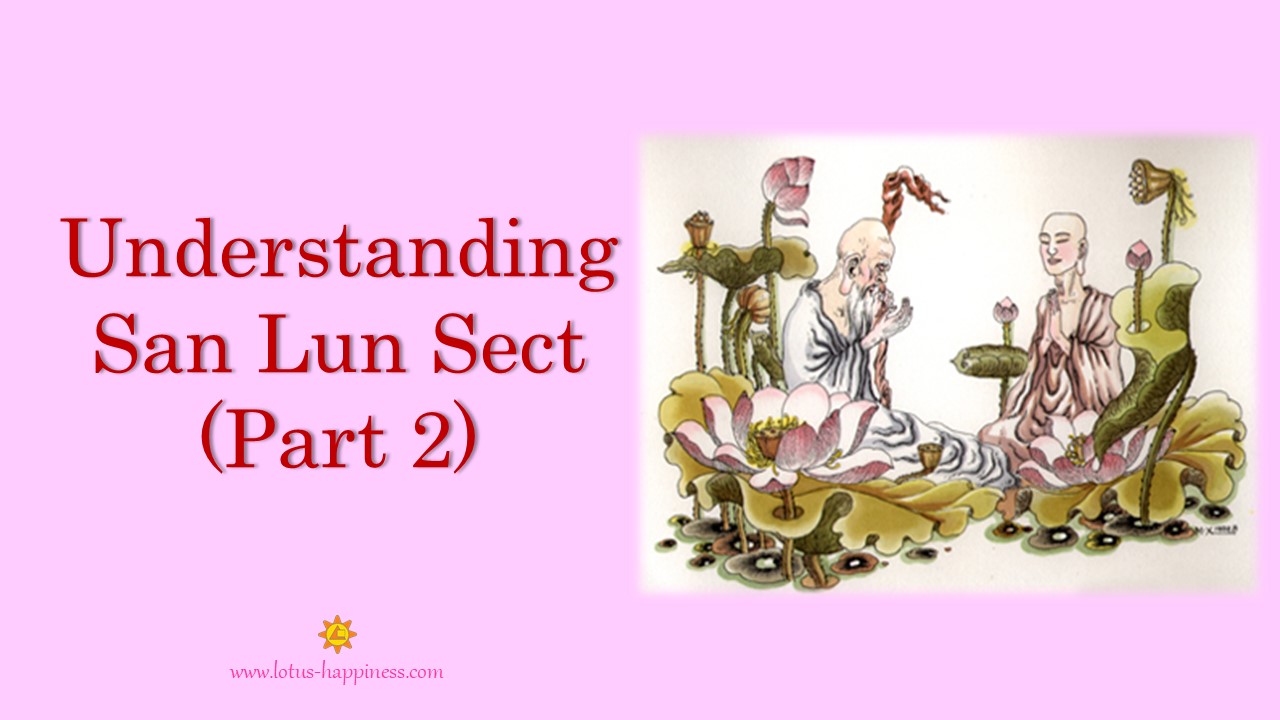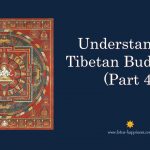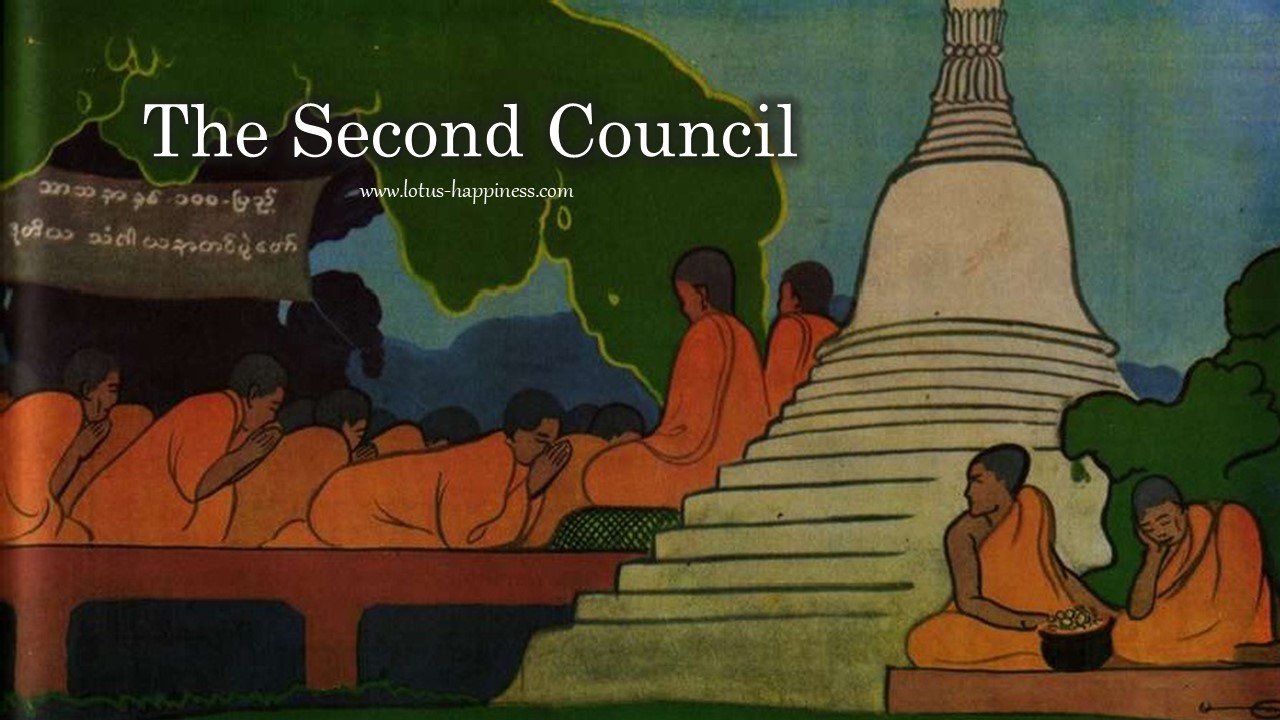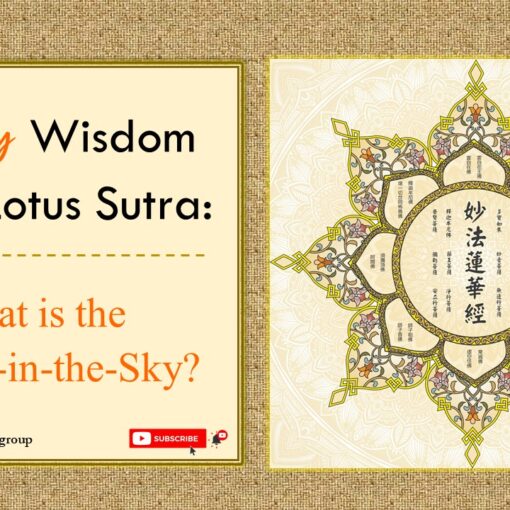Understanding San Lun Sect (Part 2)
Double Truths
All Buddhist teachings are induced by the Double Truths, i.e. Real Truth [真諦] and Common Truth [俗諦].
The Real Truth, i.e. Paramartha-satya in Sanskrit, refers to the correct dogma of the Real Mark of Middle Way, which is beyond words and perception by human beings.
The Common Truth, i.e. Samvrti-satya in Sanskrit, refers to the expedient teachings as if all phenomena are real.
The two forms of statements in the Buddhist teaching are complimentary to each other. If the Buddha teaches us the Real Truth only, ordinary people cannot interpret all the phenomena which are then believed to be discrete and extinct. If the Buddha teaches the Common Truth only, they do not understand thoroughly the ultimate principle of tranquility of self nature and thus unable to be liberated completely and salvaged.
The teaching was refined by Chih-tsang (549-623 AD) in his commentaries ‘The Essay on the Double Truth’.
Eight Negations of Middle Way [八不中道]
Based on the Middle Way teaching, Nagarjuna sought to promote the perfect wisdom of ‘absolute emptiness’ by negating all views, which can be summarized by Eight Negations, i.e.
- Neither birth nor death [不生不滅]
- Neither end nor permanence [不斷不常]
- Neither identity nor difference [不一不異]
- Neither coming nor going [不來不去]
Fifty-two Positions in the Process of Cultivation
This sect adopted the fifty-two positions of Bodhisattva in the process of his cultivation, as stipulated in the Commentary of Mahaprajna Paramitas.
These positions were established in accordance with the teaching of the Common Truth. They are: Ten Faith, Ten Dwelling, Ten Behavioral Activities, Ten Transference, Ten Stages, and Samyaksambodhi (Absolute Universal Enlightenment) as the 51st , and lastly the Wonderful Enlightenment, which is actually the position of Buddhahood.
Ten Faith [十信]
The ten grades of Bodhisattva’s faith, which are also the first ten progressive stages in the 52 Bodhisattva’s positions in cultivation. All false view are subdued by Ten Faith. They are:
- Heart of Faith [信心]
- Heart of Mindfulness [念心]
- Heart of Zeal [精進心]
- Heart of Wisdom [慧心]
- Heart of Samadhi Concentration [定心]
- Heart of Non-retrogression [不退心]
- Heart of Protecting the Dharma [護法心]
- Heart of Transference [迥向心]
- Heart of Precept and Discipline [戒心]
- Heart of Vow [願心]
Ten Dwelling [十住]
The ten stages in Bodhisattva wisdom, which are the second ten stages in the 52 Bodhisattva’s positions in cultivation. Subsequent to the cultivation of the Ten Faith, the practitioner will enter the stream of sages. All false views on dwelling are cut off and all desires are subdued by Ten Dwellings. They are:
- The stage of aspiring for Buddhahood [發心位]
- The stage of clear understanding and mental control [治地位]
- The stage of unobstructed cultivation [修行位]
- The stage of acquiring the seed of Tathagata [生貴位]
- The stage of perfect expedience [方便具足位]
- The stage of the whole mind as Buddha’s [正心位]
- The stage of non-retrogression [不退位]
- The stage of being Buddha’s son [童真位]
- The stage of being the prince of Dharma [法王子位]
- The stage of Abhiseka [灌頂位]
Ten Behavioral Activities [十行]
The ten behavioral activities of Bodhisattvas done for the benefits of others, which is the third ten stages in the 52 Bodhisattva’s positions in cultivation. All matters related to material and love are subdued. They are:
- Joyful service [歡喜行]
- Beneficial service [饒益行]
- Never resenting [無嗔恨行]
- Without limit [無盡行]
- Never in confusion [離癡亂行]
- Good at observation and listening [善觀行]
- Unimpeded [無著行]
- Exalting the paramitas amongst all beings [尊重行]
- Perfecting the Buddha’s law by complete virtues [善法行]
- Manifesting in all things the pure, final and true reality [真實行]
Ten Transferences [十迴向]
The fourth ten stages of the 52 Bodhisattva’s positions in cultivation. All existence and love are subdued by Ten Transferences. They are:
- Transference of salvaging all sentient beings, yet detaching from any form of sentient being [救護一切眾生、離眾生相迴向]
- Transference of non-destruction [不壞迴向]
- Transference of equalizing all Buddhas [等一切佛迴向]
- Transference of reaching everywhere [至一切處迴向]
- Transference of the store of boundless virtues [無盡功德藏迴向]
- Transference of the good roots of equality and harmony [隨順平等善根迴向]
- Transference of viewing all sentient beings in equality and harmony [隨順等觀一切眾生迴向]
- Transference of the mark of True Suchness [真如相迴向]
- Transference of the liberation without any tie nor attachment [無縛無著解脫迴向]
- Transference of equalizing the boundless Dharma-realm [等法界無量迴向]
Ten Stages [十地]
The ten stages of the development of a Bodhisattva into a Buddha, which are the fifth ten of the 52 Bodhisattva’s positions in cultivation. According to ‘The Commentary on Mahaprajna Paramita’ [大智度論], the ten stages are:
- Pramudita [歡喜地]– the stage of joy, i.e. joy at having overcome the previous difficulties, and entering the path to Buddhahood.
- Vimala [離垢地]– the stage of purity, i.e. freedom from all possible defilement.
- Prabhakar [發光地]– the stage of illumination, i.e. further enlightenment.
- Arcismati [焰慧地]– the stage of glowing wisdom.
- Sudurjaya [極難勝地]– the stage of mastery of utmost difficulty.
- Adhimukhi [現前地]– the stage of open mind, i.e. the open way of wisdom above definitions of impurity and purity.
- Duramgama [遠行地]– the stage of afar practice, i.e. proceeding afar, getting above the ideas of self in order to save others.
- Acala [不動地]– the stage of unperturbed state, i.e. calm and unperturbed in mind.
- Sadhumati [善慧地]– the stage of the finest wisdom, i.e. wisdom to determine where and how to save others, and possession of the Ten Powers.
- Dharmamegha [法雲地]– stage of Dharma-cloud. i.e. attaining the fertilizing powers of the Dharma-cloud.
Each of the ten stages is connected and related to each of the Ten Paramitas practiced by Bodhisattvas. The ten major ignorances are also cut off, corresponding to the Ten Stages.
Remarks on its doctrine
The sect was important because it elaborated the original concept of emptiness (i.e. Sunyata in Sanskrit) in Buddhism. Emptiness is one of the basic theory of all sects in Mahayana Buddhism.
However, this sect opposed the rigid classification of existence [假] and emptiness [空], and denies the two extremes of creation and extinction, etc in the interests of Middle Way [中].
The characteristic of this sect was dissolution of every proposition into thesis and anti-thesis. The refuting of both emphasized the interest of the third, i.e. the doctrine of Middle Way. Similar concept was also adopted by Tien-tai [天台] Sect.












